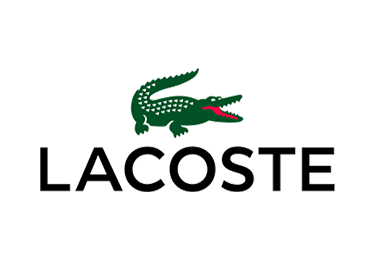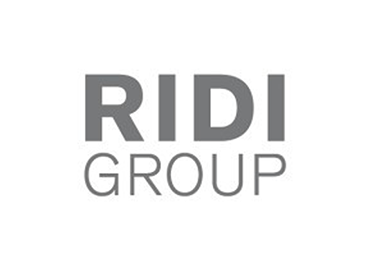- Home
- Product Feed Management
Optimize your ecommerce strategy with our feed management platform. Automatically populate, update, and syndicate product content, increasing sales across multiple channels.
Boost ecommerce performance for exponential growth.
Automate
Automate, enrich, and sync product content, attributes, and digital assets from any source.
Customize
Tailor product content using platform rules to optimize visibility and increase channel conversions.
Distribute
Distribute products efficiently across channels, ensuring visibility on platforms like Amazon and niche marketplaces.
Optimize
Get real-time insights to optimize product feeds, improve visibility, and refine listings across platforms.
Start here.
What is Product Feed Management software?
Feed Management tools enable you to efficiently control and improve how your products are displayed on ecommerce platforms and marketing channels. Tailor your product data for each platform’s unique requirements, ensuring high-quality, error-free listings that appeal to broad and specialized audiences.
channels.
Boost sales and visibility
Showcase your products to millions on high-traffic platforms like eBay and Amazon while reaching niche buyers on Zalando, ManoMano, and Decathlon for expanded visibility and conversions.
Maximize efficiency
Let our ecommerce product feed management tool handle large catalogs on mainstream platforms or curate products for niche marketplaces, freeing your team to focus on growth initiatives.
Achieve listing success
Ensure platform compliance to reduce disapprovals and prevent lost sales by keeping product data accurate and up-to-date at all times with seamless updates and real-time data validation.
Enhance product experience
Provide detailed, relevant product titles, descriptions, and high-quality images to build trust, reduce returns, and help consumers make informed purchasing decisions, improving the shopping experience.
Why do you need the right feed management solution?
Product feed management tools elevate your product listings by ensuring accuracy, consistency, and visibility. With automated updates, fewer errors, and increased sales, it boosts performance across mainstream and specialized marketplaces.
No barriers: One source, global distribution
AI-driven efficiency
Contentserv leverages AI-powered automation to streamline data accuracy and feed optimization. From automated data updates to error prevention, feed management systems reduce manual work and ensure product data consistency across channels.
A collaborative ecosystem
Integrate seamlessly with over 200 marketplaces, shopping engines, and affiliate networks. This extensive ecosystem provides the tools and support to expand your reach and efficiently manage the right product feed.
Scalable cloud-native platform
Built on a scalable, cloud-native architecture, Contentserv adapts to your business growth without sacrificing performance. Whether managing thousands of SKUs or exploring new marketplaces, our data feed management solution offers the flexibility to meet your evolving needs.
What are the key features of Product Feed Management software?
Unlimited connections
Distribute your product data to countless platforms, from global giants like Google Shopping to niche markets like Zalando or ManoMano, ensuring expansive reach to both mainstream and specialized audiences.
5,000 SKUs included
Manage up to 5,000 SKUs with ease, and as your business grows, scale up seamlessly to handle vast catalogs on platforms like AliExpress or exclusive collections on specialty sites.
Automatic product synchronization
Automatically synchronize your product data across multiple channels, ensuring listings remain accurate and up to date, reducing errors, and maintaining consistency across all platforms.
Security and GDPR compliant
Your data is securely hosted in ISO-certified data centers in Europe, fully compliant with GDPR, giving you peace of mind regarding security and privacy.
Win on the digital shelf
Leverage automated data feed management software with built-in content syndication, seamless platform integration, and advanced analytics for a unified and better product feed optimization performance.
The right solution for your business or industry
Analyze and optimize your product feeds with our Contentserv platform
Data collection
Import
Seamlessly manage product data from multiple sources, preparing it for accurate, channel-specific formatting.
Format
Adjust product information to meet the specific requirements of each channel, optimizing visibility and engagement.
Update
Continuously refresh product listings in real-time, ensuring consistent and up-to-date product content for every platform.
PIM integration
Onboard
Effortlessly integrate new product data into your PIM system, ensuring accurate and complete product information from the start.
Enrich
Enhance product listings by adding detailed descriptions, attributes, and assets, tailored for each channel and consumer segment.
Syndicate
Distribute enriched, channel-ready product data to all connected platforms, maintaining consistency and boosting brand presence everywhere.
AI-driven loop
Collect
Gather valuable product data and channel feedback to refine and enhance product content for better engagement.
Analyze
Examine trends and customer behavior to predict future needs and optimize your product data for evolving demands.
Close the Loop
Quickly act on insights to improve product listings and experiences, ensuring alignment with market and customer expectations.
Channels & integrations
Feedback & recognition from our community
Specialized streamlines operations and enhances data integrity
Frequently asked questions about Product Feed Management
How does a product data feed tool integrate with my current ecommerce software?
Our data feed management solution integrates seamlessly with major ecommerce platforms through direct API connections, enabling centralized management of your product data for distribution across multiple channels.
Can I customize my product feeds for different channels?
Absolutely! You can tailor product feeds to meet each platform’s specific requirements, ensuring optimized data for better performance on both mainstream and niche platforms.






